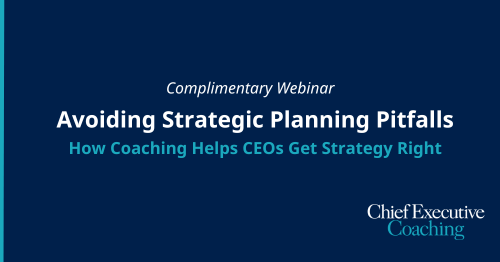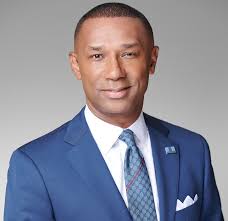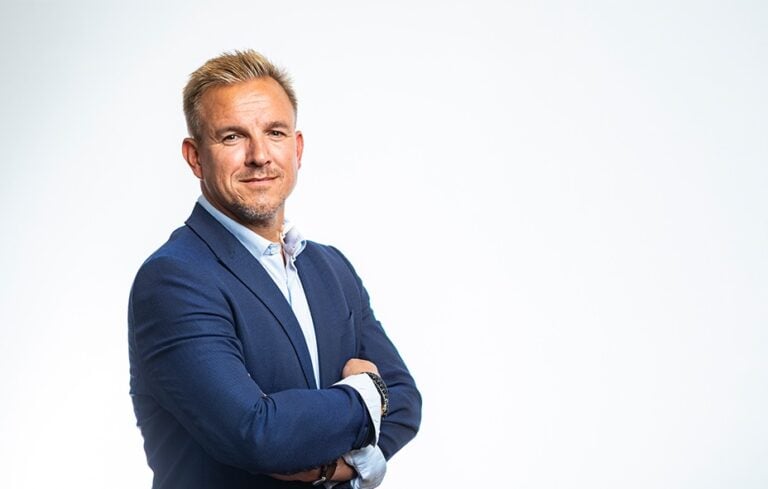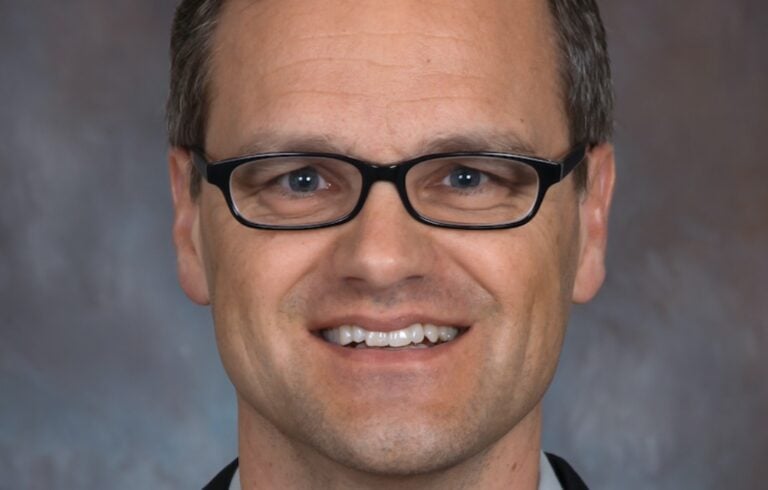
A global pandemic, economic uncertainty, social unrest, political uncertainty—with so many issues clamoring for attention right now, it would be easy to let people processes slip to the side—and a big mistake. As author and gold medal Olympian Jim Craig puts it: “Sometimes when you’re under a great deal of stress and facing something you haven’t experienced before, you forget to show appreciation to your team. But if you don’t show appreciation to those who deserve it, they will stop doing the things you appreciate.” In September, CEOs, authors and talent gurus gathered to share strategies and discuss experiences tackling the thorniest talent challenges at Chief Executive’s virtual CEO Talent Summit. Some takeaways.
When it comes to how companies fare through times of crisis or great change—trust can make all the difference. Workers who have faith in a company’s leadership, and in one another, approach tasks with more energy and confidence, perform better, collaborate more effectively and are able to move more quickly.
 “It changes everything,” says Stephen Covey, author of The Speed of Trust and cofounder of CoveyLink. “It will make you better at every other competency—and, if you don’t have it, the opposite is true. When trust goes down, speed goes down and cost goes up.”
“It changes everything,” says Stephen Covey, author of The Speed of Trust and cofounder of CoveyLink. “It will make you better at every other competency—and, if you don’t have it, the opposite is true. When trust goes down, speed goes down and cost goes up.”
This is playing out in real time in the way various companies are handling concerns like the move to remote working and embracing diversity and inclusion. Covey points to Seimens’ mobile work policy, which emphasizes autonomy and flexibility, as evincing a level of trust that brings out the best in employees. “I’ve seen many situations where people are doing remote work and, rather than being trusted, are being micromanaged,” he says.
The best part? Trust is a learnable skill, a competency that leaders can learn, grow, establish, extend and, in some cases, even restore when it is lost—and times of turbulence are the perfect time to build trust. Extending trust to remote workers, demonstrating empathy and concern for employees’ health and well-being and being candid and transparent are all ways that leaders can “behave their way” into building trust. “There is an enormous opportunity right now for us to demonstrate integrity and our intent, that we trust our people and care about every dimension of their well-being,” says Covey.
First the bad news: It’s likely to be some time—possibly until Q3 2021—before an effective vaccine for Covid-19 is widely available. On the plus side, however, following effective virus mitigation procedures can save both lives and the national economy, agree two panelists serving on the frontlines of America’s pandemic response effort.
 “We have gotten caught up in a false dichotomy of lockdown, yes or no,” says Michelle A. Williams, dean of the faculty at Harvard T.H. Chan School of Public Health. “But we have the tools—testing, mask-wearing, social distancing—to allow for public safety, worker safety, consumer safety; we just have to be disciplined, meticulous and thoughtful in how we implement and report where the risks are and how we manage them.”
“We have gotten caught up in a false dichotomy of lockdown, yes or no,” says Michelle A. Williams, dean of the faculty at Harvard T.H. Chan School of Public Health. “But we have the tools—testing, mask-wearing, social distancing—to allow for public safety, worker safety, consumer safety; we just have to be disciplined, meticulous and thoughtful in how we implement and report where the risks are and how we manage them.”
With dissonance currently clouding public health messaging, business has a role to play in whether that happens. “During the early stages of the pandemic, it was the CEOs who managed to maintain the trust, confidence and engagement of their workforces who were able to reconfigure their workspaces to follow social distancing principles, mask wearing and testing principles, communicate that to their people, and stay ahead of outbreaks in the workplace,” says Williams. “If CEOs partner with the scientists and the public health leaders and message effectively to the population, there is traction that is positive that can move public health forward.”
Given that safety across the wide spectrum of stakeholders is a key issue in the health of the economy, there is much to be gained from private sector participation in promoting public health. But it also ties into an overarching move toward embracing the concept of leading with purpose. “When you look at the reasons younger workers join companies it’s because they believe in the ethics, the values and the mission of the company,” adds Sandy Climan, CEO of Entertainment Media Ventures and a former member of the advisory committee to the director of the CDC. “So there is a huge recruitment and retention opportunity here.”
No one does leadership development better than the U.S. military—so what can companies learn and apply to help teams of civilians grow into strong private sector leaders?
 Lesson one is to start early and invest significantly, says Major General (Ret.) Malcolm Frost, a faculty member at the leadership development institute Thayer. While acknowledging that few companies can afford to invest the literally years of training that the army and other branches of the military provide for career members, Frost advocates starting to treat team members like leaders rather than managers early in their tenures.
Lesson one is to start early and invest significantly, says Major General (Ret.) Malcolm Frost, a faculty member at the leadership development institute Thayer. While acknowledging that few companies can afford to invest the literally years of training that the army and other branches of the military provide for career members, Frost advocates starting to treat team members like leaders rather than managers early in their tenures.
What’s the difference? Managers ask, “What?,” take direction, organize people, plan short-term and execute on strategy. Leaders ask, “Why,” plan long-term, align people, demonstrate initiative and look to the future.
The army employs a philosophy of leadership by intent, where each individual leads the next two levels down, and that cascades through the whole organization. Missions are doled out at the macro level—what needs to happen and why, as well as any guardrails or constraints around how the operation should unfold. Then it’s up to the subordinate to develop a plan and come back to present it to his or her commander.
Clear communication is central to the process. “Before you send them off, get them to give you a confirmation brief,” advises Frost. “Tell me what I said so I know we have a shared understanding, then come back in an hour—or a day, depending on the task—and brief me on your plan.”
After each mission, the team conducts an after-action review to examine how the mission played out and capture lessons for the future. It’s a process that that CEOs may want to consider applying to pandemic response efforts, says Frost, who notes that the results can inform advancement decisions. “You probably learned a lot about your folks in this crisis. True leadership shows up during adversity.”
“Very often, the best time to recruit people is before you need them,” says Doug Conant, the founder of ConantLeadership. Long before leaving Nabisco to undertake the massive feat of turning around troubled Campbell’s Soup, Conant had adopted a practice of taking time to set up meetings with people he thought he might want to work with in the future.
 “I’d been doing that for over a decade when I went into Campbell’s so I was able to hit the ground running,” he explains. “I believe a CEO has to be the chief talent officer and the chief employee officer, as well as a chief executive officer.”
“I’d been doing that for over a decade when I went into Campbell’s so I was able to hit the ground running,” he explains. “I believe a CEO has to be the chief talent officer and the chief employee officer, as well as a chief executive officer.”
Conant advises business leaders to look beyond the typical resume-bolstering accomplishments for deeper measures of an individual’s work and performance ethic, what he calls the three Cs:
Competence: A high degree of competence in their field or area of interest.
Character: Evidence that, time and again, they delivered on what they said they were going to do.
Chemistry: Great chemistry between them and the teams they lead.
“With every high potential individual who I spoke with, I was constantly poking at the three C’s and looking for evidence of their ability to contribute to a high-performance culture,” he says. “That’s how you set the standard on talent.”
Decades into vigorous efforts to foster diversity, companies are still struggling to move the needle on rooting out bias in the workplace. In fact, 20 percent of HR professionals participating in a recent survey by the Society for Human Resource Management (SHRM) reported that there is currently racial or ethnic discrimination or ethnicity-based discrimination in their workplaces. Johnny C. Taylor, Jr., president and CEO of SHRM, shares why that’s the case—and how to fix it:
 Hire—and Fire—Over Values: “I’ve seen CEOs who believe in a cultural value with every bone in their body, but tolerate people in the organization who do not sharing that value,” says Taylor. “If diversity is something you believe in, then you’ve got to make sure that every individual who walks in that door subscribes to the diversity inclusion and equity values that you espouse.”
Hire—and Fire—Over Values: “I’ve seen CEOs who believe in a cultural value with every bone in their body, but tolerate people in the organization who do not sharing that value,” says Taylor. “If diversity is something you believe in, then you’ve got to make sure that every individual who walks in that door subscribes to the diversity inclusion and equity values that you espouse.”
Fund It: Like any other transformational change, training up your team to lead with inclusion requires resources. “You’ve got to make sure you invest in this just like you do everything else that matters,” says Taylor.
Put a Specialist in Charge: “Someone in your organization has to own this, and it should be someone who knows what they’re talking about, because these are very, very important conversations, and they’re difficult and require someone who is highly trained,” says Taylor. “You wouldn’t put someone without the appropriate experience into a financial function, don’t do that here either.”




Chief Executive Group exists to improve the performance of U.S. CEOs, senior executives and public-company directors, helping you grow your companies, build your communities and strengthen society. Learn more at chiefexecutivegroup.com.
0

1:00 - 5:00 pm
Over 70% of Executives Surveyed Agree: Many Strategic Planning Efforts Lack Systematic Approach Tips for Enhancing Your Strategic Planning Process
Executives expressed frustration with their current strategic planning process. Issues include:
Steve Rutan and Denise Harrison have put together an afternoon workshop that will provide the tools you need to address these concerns. They have worked with hundreds of executives to develop a systematic approach that will enable your team to make better decisions during strategic planning. Steve and Denise will walk you through exercises for prioritizing your lists and steps that will reset and reinvigorate your process. This will be a hands-on workshop that will enable you to think about your business as you use the tools that are being presented. If you are ready for a Strategic Planning tune-up, select this workshop in your registration form. The additional fee of $695 will be added to your total.

2:00 - 5:00 pm
Female leaders face the same issues all leaders do, but they often face additional challenges too. In this peer session, we will facilitate a discussion of best practices and how to overcome common barriers to help women leaders be more effective within and outside their organizations.
Limited space available.

10:30 - 5:00 pm
General’s Retreat at Hermitage Golf Course
Sponsored by UBS
General’s Retreat, built in 1986 with architect Gary Roger Baird, has been voted the “Best Golf Course in Nashville” and is a “must play” when visiting the Nashville, Tennessee area. With the beautiful setting along the Cumberland River, golfers of all capabilities will thoroughly enjoy the golf, scenery and hospitality.
The golf outing fee includes transportation to and from the hotel, greens/cart fees, use of practice facilities, and boxed lunch. The bus will leave the hotel at 10:30 am for a noon shotgun start and return to the hotel after the cocktail reception following the completion of the round.